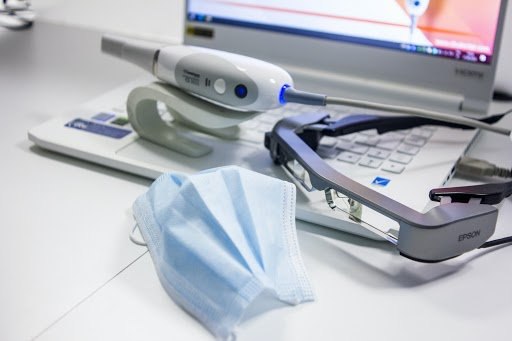How Do I Decrease My Dental Insurance Aging Report?


However, if you’ve seen a waterfall of insurance payments turn into a trickle, the first place to investigate the “why” is your outstanding insurance aging report. You may see that you have thousands of dollars outstanding that should be in your pocket. There needs to be an urgency to getting this money into your bank account. The longer a claim sits untouched, the less chance it has of being paid.
Our sales team at Dental ClaimSupport meets with prospective dentists every day who experience the same issue – an insurance aging report that has been neglected. Among many, one of our main jobs is to consistently research insurance aging reports on your behalf, and make sure these outstanding claims process.
Tracking insurance aging numbers is very important to the health of your business. This report can affect your day to day business, be considered when seeking a loan, or when selling your practice. The numbers reflected on the insurance aging report is money owed to you by insurance companies.
In this article, we will outline what an insurance aging report is, how long it takes to decrease it, and what contributing factors add to it. You will understand the importance of keeping this report low and manageable. You will also understand why consistently running this report is beneficial to the overall health of your dental practice.
What is a dental insurance aging report?
An insurance aging report is a report composed of all outstanding dental claims that have been created and sent to insurance companies. Plainly put, these are dental claims not processed or paid by the insurance company or posted to account ledgers. Posting the processed claims and payments “closes” out the claim, which removes it from the insurance aging report.
In most practice management softwares, such as Dentrix®, OpenDental, and Eaglesoft®, the insurance aging report setups are alike. The report lists all open claims by insurance carriers. It also sorts the claims by age, hence the name “aging” report.
For example, if a patient was seen today and a claim was created and sent, that claim is 0 days old. If the same claim has not been processed/paid in 30 days, meaning you don’t have a deposit in your bank account or a check in your hand, that claim has aged 30 days and needs to be researched.
Most dental billers call these claims, claims on “your over 30 day report”. This exact report should be run (printed and looked at) and worked (claims researched) at least weekly.
Dental claims 30 days and older should be your focus as a dental biller.
Dental plans follow established prompt payment laws with most states. Depending on the type of plan, they legally have anywhere from 30-45 days to process a claim. In other words, there’s no point in researching a claim that’s 14 days old, as you’ll probably find out the claim is in process and set to pay. Don’t waste your time here. Your time could have been focused on a claim over 30 days needing actual attention and research.
What is the importance of an outstanding dental insurance aging report?
Insurance aging reports are important to run routinely as they provide a snapshot of outstanding insurance funds owed to your practice. They also are a clear indicator of how a dental office is performing. Let’s simplify this:
- Many claims on the over 30 day insurance aging report are bad.
- Few claims on the over 30 day insurance aging report are good.
Yes, it’s that simple. If dental claims continue to hit your over 30 day report, that means there is an issue somewhere else.
Maybe the issue is with data entry. Maybe it’s with claim submission or insurance verification. Maybe it’s an issue with your clearinghouse. Regardless, if dental claims are sent “clean”, meaning nothing is wrong with them, then essentially, the vast majority should pay. If they don’t process and pay, you need to figure out why. Let’s discuss that in detail.
How long will it take to decrease my dental insurance aging report?
With consistent hard work, your insurance aging report can see immediate decreases and improvement within 1-4 months. However, it all depends… You probably hate that answer, but it’s true in this case. We’ll discuss why. 
We mentioned earlier that your insurance aging report should be run and worked weekly. So, ask yourself or your team, when was the last time this report was touched? The answer may surprise you. If the report has been neglected, it will undoubtedly require more time and attention to work through completely.
The time needed to bring the report down also depends on the various reasons claims are on the report in the first place. If you were to call the insurance carrier for follow up on the claim status, you will most likely receive one of these four responses from an insurance representative.
Reasons a claim is on your dental insurance aging report
- The claim is not on file
- The claim was denied or is a “no pay”
- The claim has been paid but payment is not posted
- The claim needs additional information
So following that call with an insurance representative or during your research on an insurance web portal, what’s next? Once you pinpoint why a claim is still lingering on the report, your mindset should shift to “how do I remove this claim from the report”?
How do I work my dental insurance aging report?
The insurance aging report demands dedication. There is no secret sauce to this. In order to decrease your aging, you need to start at square one and begin calling on claims and researching claims on web portals. Make sure you dedicate a critical thinker to handle your insurance aging report. Problem solving is what insurance aging is all about. Find a team member with an investigative approach for this task.
You will quickly find out where the issues lie as most aging reports stem from a common issue rather than a multitude of them.
- Are many claims just not on file?
- That indicates an issue with data entry.
- Are many claims on file but need additional information?
- That indicates an issue with the original claim submission and not sending the right documentation.
- Are claims not on file but you find all the information is correct?
- That indicates an issue with the clearinghouse or incorrect payer ID
So, where should you begin?
Start with the oldest claims first and work your way to the newest.
Typically, this means running your “over 90” day report. Claims over 90 days may take longer to pay as they sometimes require more appeals and have a higher chance of reaching timely filing limits.
Research your outstanding claims by insurance carrier.
Grouping your claims by insurance carrier will increase efficiency. Since most, if not all, dental practice management software’s set their aging reports up this way, you can tackle many claims at once, either on a single web portal or over one phone call.
Handling multiple claims with one phone call is a better use of time than trying to work each claim individually. Work smarter, not harder!
Don’t stop until the report is complete.
It’s okay to go after low hanging fruit, meaning those insurance companies with user-friendly web portals and helpful representatives. Don’t neglect the other insurance companies though.
Many times, dental teams start working a report and never finish it. Since reports are typically in alphabetical order, an example would be the Aetna claims are always worked and the United Concordia claims often take a back seat.
Rinse and repeat.
Continue to handle the aging report with this strategy. Not all claims will pay the first time you research and correct them. Continue working the insurance aging report to completion, weekly to bi-weekly.
Also, other claims will continue to jump on the report if the initial issues are never fixed (i.e. data entry, clearinghouse, insurance verification). Fix these underlying issues that are culprits adding to the aging report. That way, fewer current claims will show up on your over 30 day report.
Why do I have outstanding dental claims?
You now know some tricks on how to clean up an outstanding insurance aging report, but why do claims flood this report in the first place? Believe it or not, there are many reasons claims can show up on the outstanding insurance aging report.
Understanding why claims end up on the aging report is the first step in actually managing the report altogether.
Related Posts
Dental billing resources
.png)
